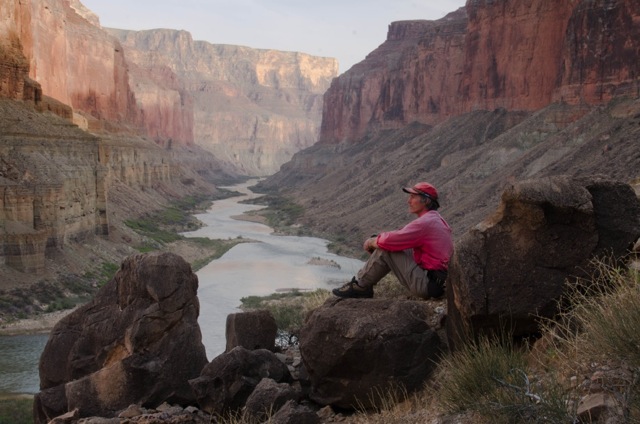Land trusts actively work to conserve land by undertaking or assisting in land or conservation easement acquisition, or by its stewardship of such land or easements. It is an effective tool for protecting open space, sustaining important natural habitat for native species, ensuring air and water quality, and contributing to a high quality of life for nearby inhabitants.
Why is this important to your community?
As urban areas have grown and spread over the last several decades, the need to preserve and protect open space has become an important priority. At a regional scale, while development has concentrated in the cities and towns for each of the CONNECT counties, in the past 2-3 decades unincorporated areas surrounding cities and towns have developed quickly in the high growth counties – Cabarrus, Gaston, Iredell, Lancaster, Mecklenburg, Rowan, Union (NC), and York, consuming much former open space and farmland in those counties. CONNECT’s public input demonstrated increasing interest in retaining and enhancing vibrant downtowns and supporting development where infrastructure already exists, and a growing appreciation of the need to protect natural open spaces for recreation, enjoyment of the natural environment, farming, environmental protection, and educational opportunities. Residents realize that open space maintains a natural balance of ecosystem functioning and results in a higher quality of life for those living in urban areas, and are concerned that there be tools available to preserve it.
While the benefits of natural open space are vast, oftentimes it is difficult to make the case for preservation in the face of development pressures and human populations’ need for growing room. Thus, land trusts have evolved to help ensure their protection and provide a multitude of regional benefits.
Skip directly to
How Does It Work?
Resources
Using the Tool
Partners
Where Has It Worked?
Where is it appropriate to use?
What priorities does it address?
What other tools are related?
- Agricultural Conservation Easement Programs
- Heritage and Agri-Tourism
- Business and Education Training for Farmers
How does it work?
A land trust—or conservation land trust— is an organization that acquires properties through purchase or donation to protect them for their ecological value and the enjoyment of future generations. Locally-based land trusts are typically established in geographic areas or regions that share natural characteristics (i.e., native plant communities) or commons goals and values. The organization works with landowners and the community to conserve land by accepting donations of land, purchasing land, negotiating private, voluntary conservation agreements on land, and “stewarding,” or maintaining, conserved land. Land trusts are intrinsically connected to local needs, so they are well-equipped to identify land that offers critical natural habitat, as well as land offering recreational, agricultural, or other conservation value.
Land trust organizations vary in size and management structure, and oftentimes carry out educational programming and outreach related to their mission. The Nature Conservancy is one of the largest examples of a conservation land trust in the nation; it protects 15 million acres across the United States. In South Carolina, the Land Trust Alliance reports that 24 land trusts have preserved 245,576 acres of land across the state; similarly, 24 active land trusts have protected 400,000 acres of land in North Carolina, according to the Conservation Trust for North Carolina. Land held in conservation can serve multiple purposes such as allowing for agricultural production, greenway, park and trail development to serve recreational purposes, and providing connections within a green infrastructure network.
Ready to get started?
Using the Tool
Once established, through the appropriate legal authority and specified geography, land trusts function in the following ways:- Land trusts may acquire a property through purchase or through a donation from the owner. They may then hold the property or convey it to a government agency or another conservation group that will protect the land, for example a park. The land trust may then resell the tract as a conservation property, with an agreement that limits what future owners can do with it to ensure that the conservation values are maintained.
- Land trusts may hold conservation easements, which are development rightsthat are purchased or donated. That means the land can continue to be used for habitation, agriculture, or recreational purposes, but certain development is restricted. These agreements are completely voluntary and are negotiated by the landowner and the land trust.
- Land trusts may be responsible for stewardship of land held in ownership or under easement, monitoring it to make sure its conservation values are protected according to the agreement forever. Stewardship often includes maintenance such as trail maintenance, control of invasive species, and safety monitoring of areas under active use.
- Land trusts often own and manage nature preserves, host public events and programs, and publish promotional materials for recreational and educational purposes and to garner support for the land trust’s mission. This type of programming requires additional funding and dedicated staff.
- Because a major barrier to land conservation is often the legal fees and process associated with the donation of the easement or purchase of the land, land trusts typically engage in fund-raising to support these costs. Local governments committed to farmland or open space preservation can consider setting aside funds to assist with these fees and costs, particularly for potential donors who are “land rich” but “cash poor.”
Partners
Where has it worked?
Spartanburg Area Conservancy (SPACE) - Spartanburg, SC
 Image Source: KVLT 2015 Speaker Series begins Jan. 14.
Image Source: KVLT 2015 Speaker Series begins Jan. 14.
Contact
Jennifer Hoesing, Executive Director
864-948-0000
andrew@spartanburgconservation.orgAbout the Program
SPACE is a land trust focused on a small area in the Piedmont region of northwestern South Carolina adjacent to North Carolina. SPACE was created in 1989 due to concern over rapid growth and the increasing loss of green space and habitat. SPACE has protected 2,537 acres in Spartanburg and Union Counties, comprised of nine fee-owned properties (four of which are nature preserves managed for the public’s enjoyment and education) and 19 conservation easements. A main focus of the organization is on the Pacolet Watershed, which is the source of most of the area’s drinking water, and related rivers and streams. In addition to protecting critical watersheds, protected lands include historically significant land, wetlands, farms, forests, geological formations, and habitat for numerous rare and/or threatened animals, birds, reptiles, wildflowers, trees, and other plant species. SPACE also organizes outdoor educational events and activities focused on increasing awareness and enjoyment of the area’s open space resources.
Why it works
SPACE’s conservation success has been enhanced through partnerships with regional and community conservation groups, such as the South Carolina Department of Natural Resources, the Nature Conservancy, Upstate Forever, and the South Carolina Conservation Bank. In addition, SPACE benefits from the State of South Carolina’s tax incentive for private landowners, which means that a landowner can receive a state income tax credit in exchange for a gift of land for conservation, or for a qualified conservation contribution. South Carolina’s tax incentive comes in the form of a tax credit equal to 25 percent of the fair market value of the conservation gift. The incentive enables working with willing landowners to conserve hundreds of acres of productive agricultural lands and natural areas. In 2007 alone, SPACE was able to conserve more than 800 acres thanks in part to this incentive. South Carolina also offers the exchange of credits between buyers and sellers, which benefits both landowners and land trusts.
Katawba Valley Land Trust - SC
About the Program
Established in 1992 and working as an all-volunteer group for most of its 20-year history, the Katawba Valley Land Trust is a non-profit conservation organization dedicated to the protection of natural and cultural resources in the Catawba River Valley of South Carolina. KVLT works with landowners who wish to preserve their land through conservation easements, donation, or sale. The organization is supported financially by individual membership dues, support from our corporate partners, and grants.
KVLT emphasizes environmental education and outreach efforts by publishing books such as Spider Lilies: The Rocky Shoals Spider Lilies of Landsford Canal State Park, distributing stunning photographs and post cards of significant natural resources, conducting research on wildlife species, holding public lectures, coordinating environmental education efforts in the local schools, conducting an annual speaker series and leading hikes and bird counts and other events promoting love and stewardship of the natural environment.
Why it works
KVLT has protected over 8500 acres of land in five South Carolina counties through conservation easements, acquisition, or transfer to other management agencies. Areas of focus for KVLT’s conservation efforts have included buffers along the Catawba River and its tributaries, the Landsford Canal and Forty Acre Rock areas, the Great Falls area and the Lancaster Greenway Preserve.
KVLT uses national standards to monitor and manage its holdings and established a stewardship endowment to ensure perpetual care. Many of the land trust’s conservation efforts involve partnerships with local, state, or federal agencies and other non-government organizations to accomplish conservation objectives. Some of KVLT’s partnership-driven successes include:
- Expansion of the protected area around Landsford Canal State Park in Chester and Lancaster counties from 200 acres to over 1,400 acres
- Creation of the Lancaster Greenway Preserve, a necklace of green that provides urban open space of over 350 acres along the major creeks through the City of Lancaster
- Purchase of the Heritage Tract, protecting over 2,000 acres surrounding the reservoirs at Great Falls in Chester County
- Protection of a working family farm in Chester and York counties through an innovative purchase development rights initiative, through funding from the South Carolina Conservation Bank
- Initiation of the Catawba Master Naturalist Program, providing intensive training for citizen scientists in cooperation with Clemson University, USC-Lancaster, and other local entities
- Heritage and Agri-Tourism



